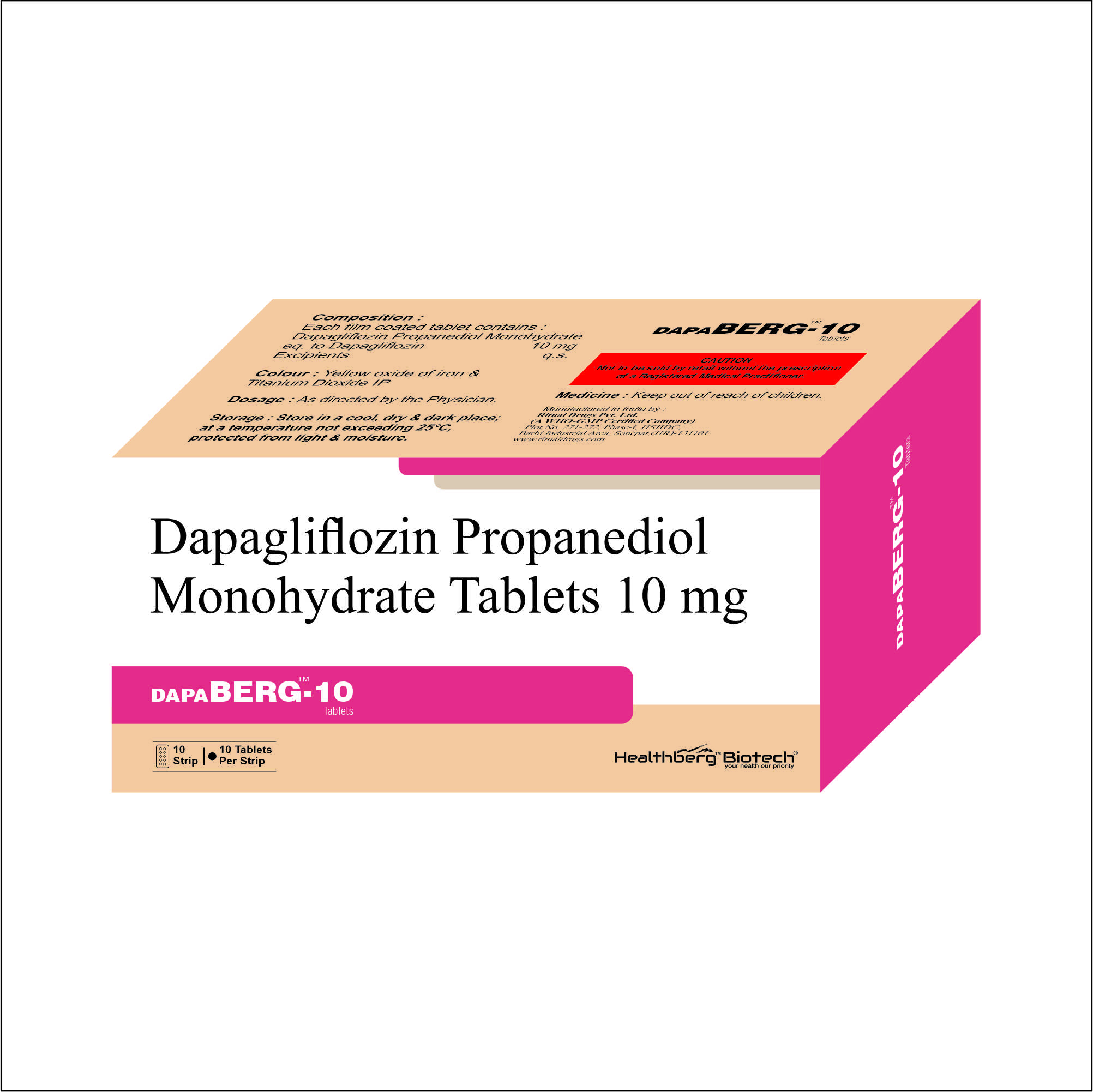Dapagliflozin is an oral medication used in the treatment of type 2 diabetes mellitus. It belongs to a class of drugs known as sodium-glucose co-transporter 2 (SGLT2) inhibitors. Dapagliflozin works by inhibiting the reabsorption of glucose by the kidneys, leading to increased glucose excretion in the urine. This helps lower blood glucose levels and is typically used as part of a comprehensive diabetes management plan.
Uses:
- Type 2 Diabetes Management: Dapagliflozin is prescribed to manage blood glucose levels in individuals with type 2 diabetes. It is usually used in conjunction with a healthy diet, exercise, and other diabetes medications.
- Blood Glucose Control: Dapagliflozin helps lower blood glucose levels by promoting the elimination of excess glucose through urine. This can be particularly beneficial for individuals who struggle to achieve adequate glucose control with other medications.
- Cardiovascular Benefits: Dapagliflozin has shown cardiovascular benefits in some studies, including a potential reduction in the risk of cardiovascular events in individuals with type 2 diabetes and established cardiovascular disease.
- Kidney Protection: Some studies suggest that dapagliflozin may have protective effects on the kidneys, potentially reducing the risk of kidney complications in individuals with diabetes.
Problems and Concerns:
- Genital Infections: Dapagliflozin can increase the risk of genital infections, particularly in women. Patients should maintain proper hygiene and seek medical attention if they experience symptoms like itching, redness, or discomfort.
- Urinary Tract Infections: There is a potential risk of urinary tract infections with dapagliflozin due to increased glucose excretion in the urine. Patients should stay hydrated and be aware of symptoms such as pain or burning during urination.
- Dehydration and Hypotension: Dapagliflozin’s mechanism of action can lead to increased urination and potential fluid loss. This can increase the risk of dehydration and hypotension (low blood pressure), particularly in elderly patients or those taking diuretics.
- Ketoacidosis: Rare cases of diabetic ketoacidosis have been reported with SGLT2 inhibitors, including dapagliflozin. Patients should be educated about the symptoms and seek medical attention if they experience signs of ketoacidosis, such as nausea, vomiting, abdominal pain, and fruity-scented breath.
- Renal Impairment: Dapagliflozin may not be suitable for individuals with severe renal impairment. Dose adjustments or alternative treatments might be necessary in such cases.
- Amputation Risk: Some studies have suggested an increased risk of lower limb amputations with dapagliflozin, although the overall risk appears to be low.
- Hypoglycemia: While dapagliflozin itself is not associated with hypoglycemia (low blood sugar) when used as a monotherapy, the risk of hypoglycemia might increase when combined with other diabetes medications like insulin or sulfonylureas.
- Genital Mycotic Infections: Patients taking dapagliflozin may experience genital mycotic (fungal) infections. It’s important to maintain proper hygiene and seek medical attention if needed.
It’s important for individuals prescribed dapagliflozin to work closely with their healthcare provider to monitor their blood glucose levels, address potential side effects, and make any necessary adjustments to their treatment plan. Dapagliflozin can be an effective tool in managing type 2 diabetes, but its use should be guided by a healthcare professional to ensure its safety and appropriateness for each individual’s health condition and needs.
